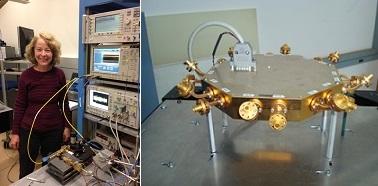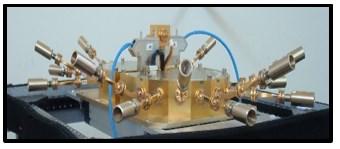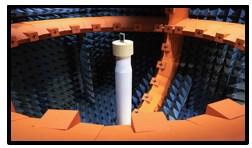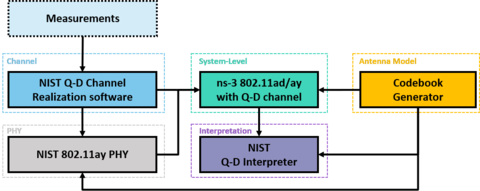Summary
“5G and beyond” refers to future generations of mobile wireless communication systems. The vision for these next-generation systems are to enable groundbreaking mobile applications requiring high-quality low-latency visual, tactile and audio telepresence, in addition to massive capacity (upwards of 1 000 times) and connectivity (billions of users and machines).
Next generation mobile communications have begun harnessing available frequencies at millimeter wavelength (30 – 300 GHz), where high propagation loss can be recovered by high-power transmitters with tens to hundreds of antennas, commonly referred to as Massive-MIMO antennas. The greater the number of antennas, the higher the transmit power that can be achieved by combining the individual power of each antenna, a technique otherwise known as beamforming. Industry is already exploring the use of massive-MIMO antenna arrays that allow increased simultaneous transmission capacity; millimeter-wave spectrum to alleviate the spectrum crunch in current frequency bands; and ultra-dense networks to allow short-range, high-speed data transfer.
An important part of CTL’s work in this area is sponsoring the NextG Channel Model Alliance, a nexus of efforts across the globe to develop future radio channels that will make up these massive capacity low latency 5G networks.
Description

NIST engineer Kate Remley led development of new 94 gigahertz calibrated signal source and 16-antenna array operating at 83 gigahertz
The realization of this long-term vision requires tackling key technical challenges to allow for greater temporal, spectral, coding and spatial resource efficiency. As well, these technologies all rely on high levels of electronic device integration, yielding a radical new connectorless measurement paradigm where “on-wafer-to-over-the-air” measurements are the norm.
The “5G and Beyond” program at NIST is designed to provide the wireless industry with the maximum metrological impact as it develops new technology, standards, and instrumentation. It includes the following projects.

- Channel Measurement and Modeling
- mmWave Channel Sounding
- Channel Modeling

- Over-the-Air Test for Massive MIMO
- Antenna Meas. Facility
- MIMO Antenna Test
- Free-Field Modulated Signal Test
- Reverb. Chamber Methods

- Future Wireless Communications Systems and Protocols
- Millimeter Wave Communications Protocols
- Integrated Communication and Sensing Systems

